Our wedding day will be filled with beautiful Nepali traditions, lots of colour, and a few moments that might look unfamiliar if you haven’t attended a Nepali ceremony before. To help you follow along and know what’s happening, we’ve put together this short guide explaining each of the key rituals and what they mean.
So what’s happening?
Almost all of the ceremony will be conducted in Nepali, so it may be a little tricky following along. I myself will have a rough idea what happening, but will be mainly be doing as I’m told and going where I’m told. So to help you all follow along, here is a chronological (ish) description of what will happen during the main wedding ceremony, starting from when the Janti party arrives, and finishing with us being official husband and wife. Feel free to refer back to this as the day moves along.
JANTI AAGAMAN – This procession marks arrival of the Groom and his family. They are usually preceded by a marching band and plenty of fanfare to announce his arrival at the bride’s home.
BARANI – The bride’s parents await the groom in the Mandap (reception area). The father of the bride will invite the groom and his family in. He will also place tikka, (vermilion powder), on the groom’s forehead.
KANYE AAGAMAN – Arrival of the bride to the Mandap to join the groom. The grooms family will present the bride with gifts including clothes, jewellery and food.
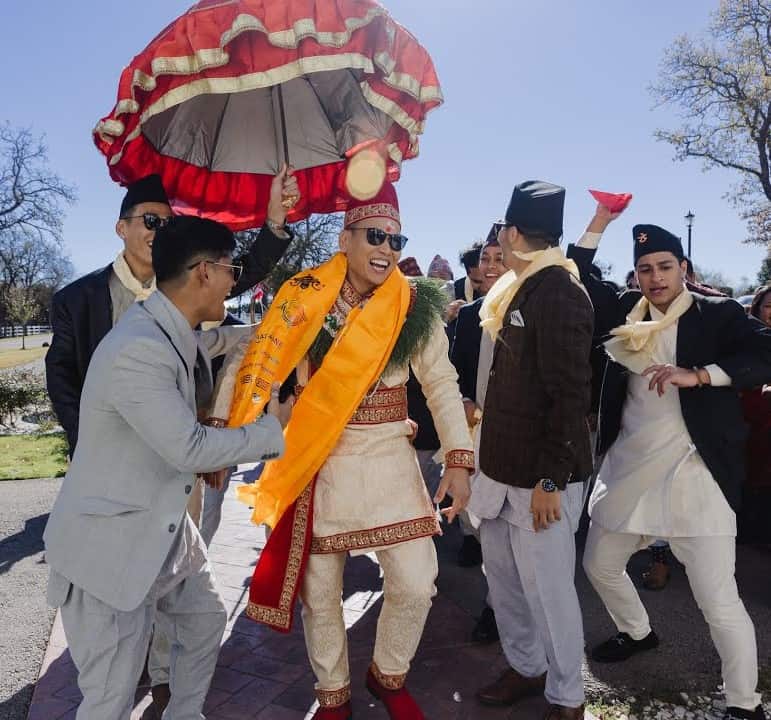
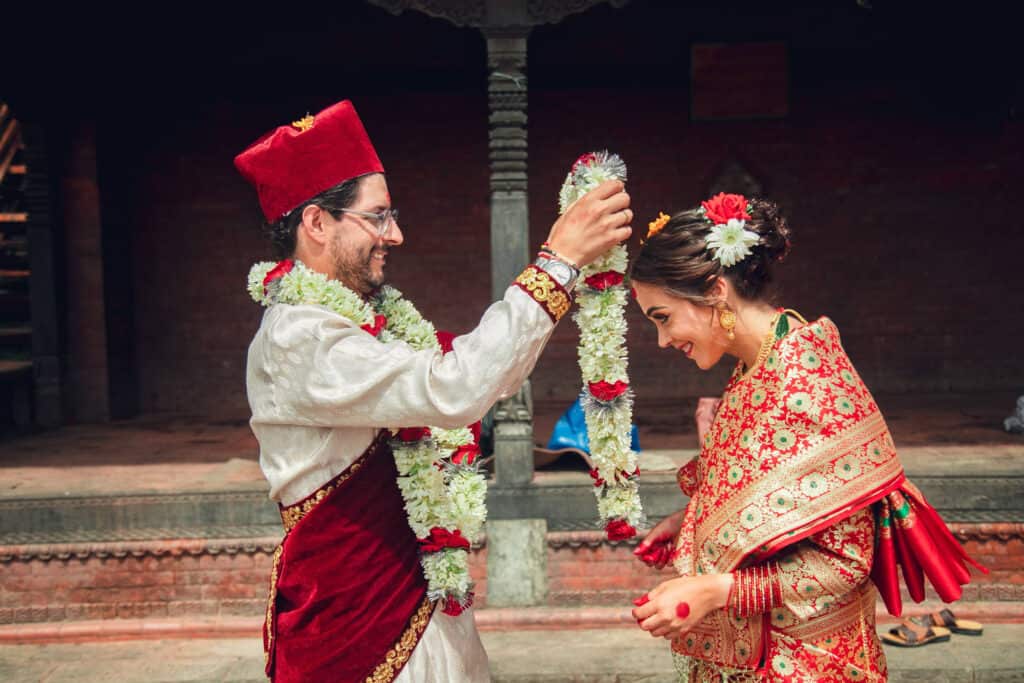
SWAYAMBARA– Is an ancient Hindu practice of choosing a husband among various suitors. Once chosen, each will place a garland around each other’s neck, indicating their intention to marry. Rings are also exchanged to represent the vows they make to each other. The bride will also walk around the groom three times to represent that the groom is the center of her universe.
GANAPATI PUJA – The bride and groom will then move to the Jagge (ceremonial structure). A puja, (prayer), to Lord Ganesh, (deity depicted with an elephant head, and human body), that guides the couple towards a successful journey together.
HASTA MELAP – In this ritual, the bride’s parents entrust their daughter to the groom by putting the bride’s right hand in the groom’s right hand, while reciting sacred verses.
HAVAN – The couple invokes Agni, (God of Fire), by lighting the fire, to witness their commitment to each other.
SINDOOR DAAN – The groom will place Sindoor, (vermilion powder), on the parting of the bride’s hair, symbolizing her new marital status, and a desire for her husband’s longevity.
LAGAN GAANTHO – The bride and groom are tied together with a scarf to symbolize their eternal bond.
SAAT PHERA – Translates to the “7 Rounds”. The bride leads the groom, while they circle the fire seven times. Each Phera represents a prayer or promise: The first is for food, the second for strength, the third for prosperity, the fourth for wisdom, the fifth for progeny, the sixth for health and the seventh for friendship.

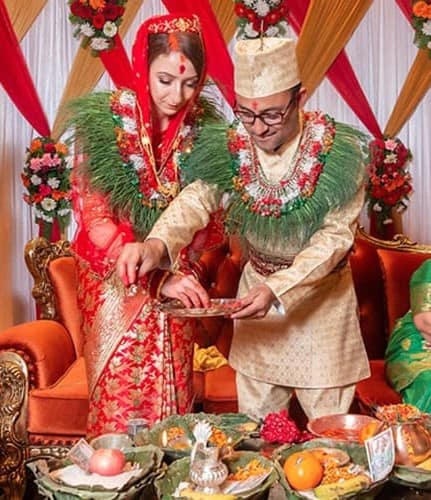
Mahur khuwaune and Hridaya sparsha
This is done to provide some lighter moments after the solemn promises. The couple is asked to share the same bite of a traditional sweet (Mahur khuwaune; “eating sweets”). This is done to promote intimacy. The bride and groom each eat and feed each other three times. In the same lighter vein, the husband and wife also touch each other’s hearts (Hridaya sparsha; “heart touching”), which helps to promote physical closeness.
Lunch and arrival of guests
After all the official ceremonies, more guests will arrive to congratualte them and share in a buffet style lunch. This is when the families will mingle more. The bride, groom will receive all the guests in a receiving line. Guests often bring gifts, flowers, or khata. In western weddings, the bride and groom walk around the wedding meeting guests as they go. In Nepal, we sit at the front, and everyone comes to us.
Farewell of the bride
Once the ceremony is finished, the bride is given a farewell by her family (parents and siblings). With this blessing the parents give all their good wishes for their daughter to start a new life as a member of her new family and household.
At this point, the father of the groom (in this case my mother) assures the father of the bride that they will look after the daughter-in-law as a very dear member of the family and will treat her like their own daughter.
What else to expect this week:
Nepali weddings are always rich in tradition and customs. Each of the many ethnic groups in Nepal will also do their weddings differently. Our wedding for example, will be a mixture of Samata’s fathers Bhaun culture (main wedding ceremony) and her mother’s Newar culture (the reception and feast). Some other terms and traditions that you will likely hear or notice at the wedding might be:
Mehendi:
Traditionally, mehendi (henna) was applied as a medicine to relieve stress, keep the body from becoming tense, and cool the body. It was applied to the nerve endings on the hands and feet to be most effective. It’s also said that the smell of the mehendi acts as an aphrodisiac.
Now, mehendi is mostly decorative. It’s rumoured that the darker the colour, the more the groom loves you, and the longer it stays on, the happier your marriage will be. It’s also customary to hide the groom’s name somewhere in the pattern so he can’t find it. If the groom can’t find his name, he has to buy the bride a gift. This is an Indian tradition that has been adopted in Nepal.
Bridal saree:
In Hindu weddings, it’s tradition for the bride to wear a red saree or lehenga (two piece dress). Red is good luck in Hinduism. The colour represents purity, love, and fertility. It’s also a bold color that represents passion, power, and strength. Most of the sarees are embroidered with gold and green. Green often represents the peace and harmony found in nature.
Khata
Khata originated in Buddhist cultures but are popular among all religions in Nepal. The scarf represents purity, good luck, compassion, and sincerity. It is often given as a gift of congratulations and also to guests when they arrive or depart. Many have mantras printed on the fabric that bring good luck to the wearer.
Stealing the Grooms Shoes
During Nepali weddings, there is a tradition where the young women on the bride’s side steal the shoes of the groom. This was originally an Indian tradition, but now many Nepalese do it as well. During the ceremony, the groom removes his shoes and gives them to a female family member to protect. The bride’s sisters (or female relatives) have to try to steal them before the ceremony is over. Once the shoes have been stolen, they are held for ransom. Bargaining begins and the two sides settle on an acceptable amount of money. The bride’s side gets to take the money and have a nice night out. In arranged marriages, it’s a fun way for both sides of the family to get to know each other since it’s likely they have never met.
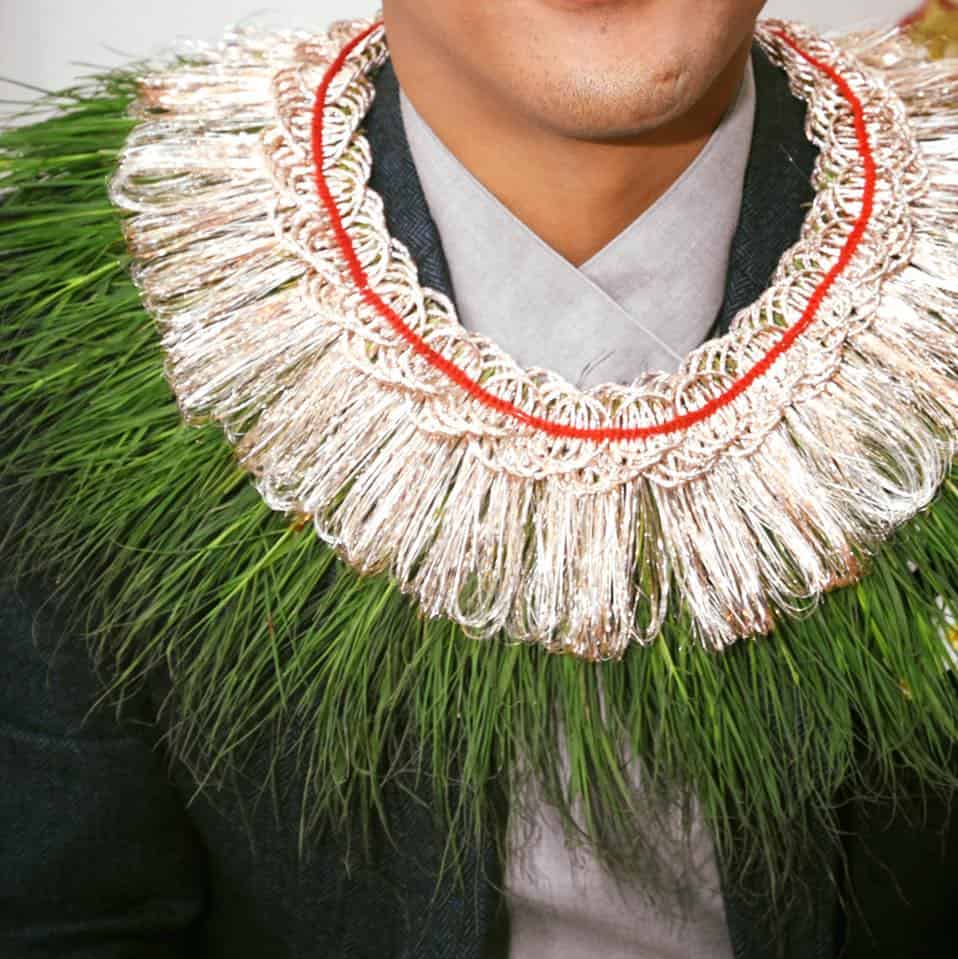
Dubo ko mala:
During Hindu weddings, it’s traditional that the bride and groom place a grass mala (garland) around each other’s necks. This is called a “Dubo Ko Mala.” The mala is made from Bermuda grass which does not fade or wilt after being picked from the ground. Because the grass stays so well preserved, it represents a long happy marriage full of good fortune.
Kusha ring:
A grass ring to wear on our right fingers (before the exchanging of our wedding rings). This is called a “kusha ring.” The kusha grass is considered holy in Hinduism because it is long lasting. It’s believed that the ring makes you pure and doing any kind of worship without the ring on would be fruitless.
The grass used to make this ring only grows in certain tropical regions including some areas of Nepal. If used for worship, the grass cannot be picked any random day. It can only be picked the day after a full moon.
Kalash:
During the puja (worship), we had to give offerings to different elements of nature and gods. Each of the bowls on the table represents a different thing which we are praying to. The brass canister is kalash which is the most important one in the ceremony. The canister represents the cosmos, and it’s filled with water which represents the elixir of life. In a wedding ceremony it also represents fertility. The offerings made during puja include fruit, money, water, flower petals, sindoor powder, and rice.
Diyo:
Diyo (light) is lit during the ceremony. This represents prosperity, purity, good luck and power. The light is believed to get rid of darkness and any evil spirits.
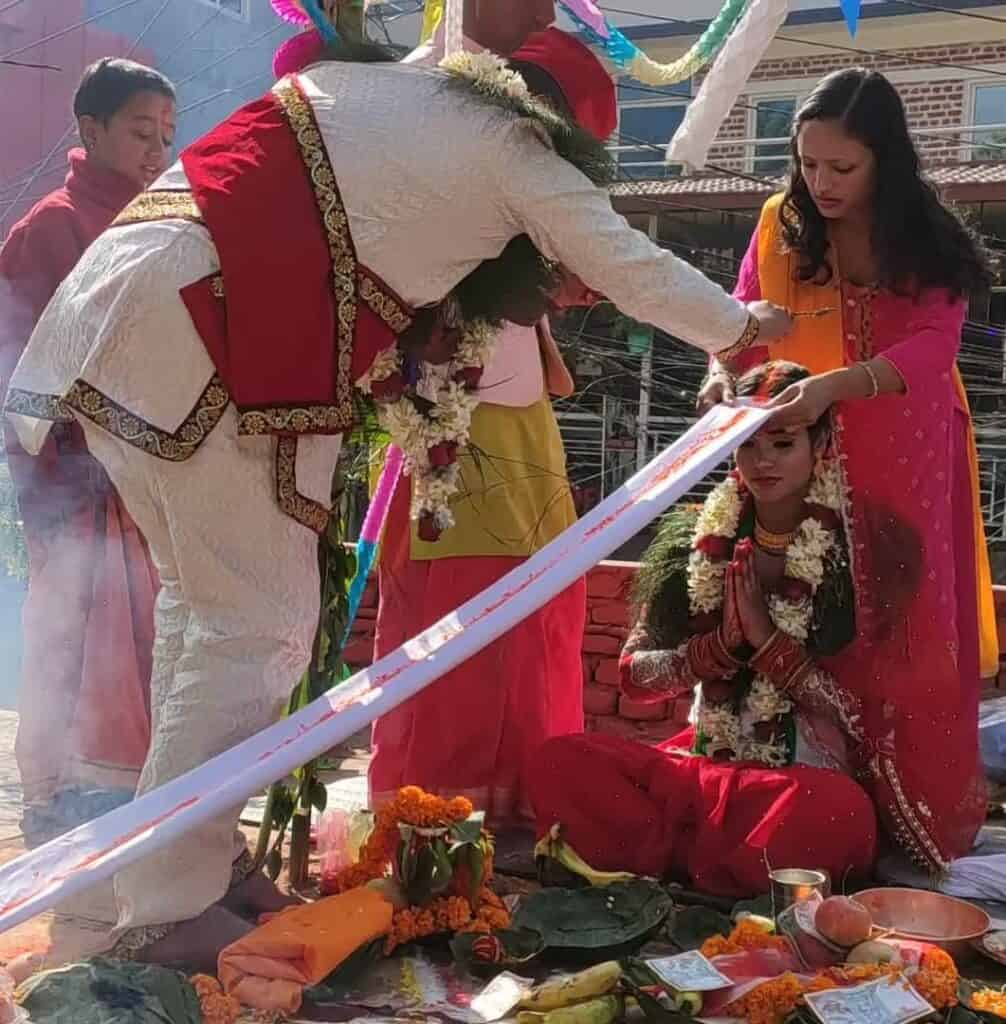
Sindoor:
Sindoor powder is applied to a bride’s hair part by her husband when they get married. This is the sign that they are officially married (much like saying “I do” in western cultures). The powder can only be worn by married women and acts as a symbol like a wedding ring.
Vidaai
Vidaai is the part of the ceremony when the bride says goodbye to her family. In Nepal, most men and women live with their parents. When a couple gets married, the bride goes to live with the groom’s family. This is usually her first time leaving home for an extended period, therefore, the goodbyes are often very sad and full of tears
Nepali Wedding Receiving Line (at the reception)
The bride, groom receive the guests in a receiving line. Guests often bring gifts, flowers, or khata. In western weddings, the bride and groom walk around the wedding meeting guests as they go. In Nepal, you sit at the front, and everyone comes to you.




